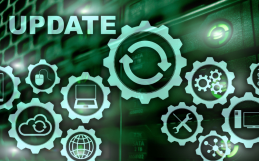For the past several years, protecting company data has been one of the top concerns for IT leaders. Phishing scams, ransomware attacks and other data breaches are constantly becoming more and more sophisticated, which has added to the already heavy burden that IT professionals contend with every day. Given the increased importance of information security, new methods for analyzing potential security issues have grown in popularity, including Security Information and Event Management (SEIM) platforms.
According to Forbes, it is estimated that cyber-attacks cost businesses globally $400 billion a year.
What is Security Information and Event Management (SIEM)?
At its most basic element, Security Information and Event Management provides you with a “Birds eye view” of your entire defense system. Designed to provide you with security related information from multiple sources (i.e. your firewall, malware platform, endpoint devices, switches, etc.), SIEM platforms review and analyze security devices and systems that are generally not connected with one another to produce alerts on potential issues. These alerts come from combined analysis on several devices and systems, which would typically not be picked up by one system on its own.
How does a SIEM Tool Work?
As mentioned above, a SIEM tool monitors multiple security related systems, such as your firewalls, antivirus, end user devices, and Active Directory login attempts. A SIEM tool provides security alerts by combining data from these systems. For example, while 2-3 unsuccessful user login attempts may not generate an alert on its own, these unsuccessful login attempts followed by a perimeter attack on your firewall and another unsuccessful login attempt on one of your critical servers would generate a SIEM alert.
More than 4,000 ransomware attacks have occurred every day since the beginning of 2016.
SIEM platforms are designed to prevent attacks from sophisticated data thieves, while simultaneously providing you with a litany of security related data and reports that were once unavailable. This information can be used both reactively and proactively, as it can help stop security breaches that are currently in progress and make important security improvements moving forward.
What does a SIEM Tool Review?
A SIEM tool generally will review and collect information from the following core systems:
- Active Directory logs (successful and unsuccessful logins)
- Antivirus (end user devices and servers)
- Endpoint Protection devices
- Firewalls
- Malware and Spam platforms
- Network Devices (switches, access points, routers, etc.)
This information will be collected and correlated from all of these devices, which will then be analyzed for emerging trends and patterns.
Why do I need SIEM?
The average cost to recover from a successful cyber attack is $36K
SIEM is considered the next generation in information security as it can discover potential issues that today’s security systems simply cannot detect. Security breaches come with substantial financial loses, and the reputational hit can be even worse. Investing in advanced security systems now will significantly lower your chance of experiencing a security issue, while also giving you the peace of mind in knowing that all of your security systems are in sync, monitored, and functioning properly.
What to learn more?




